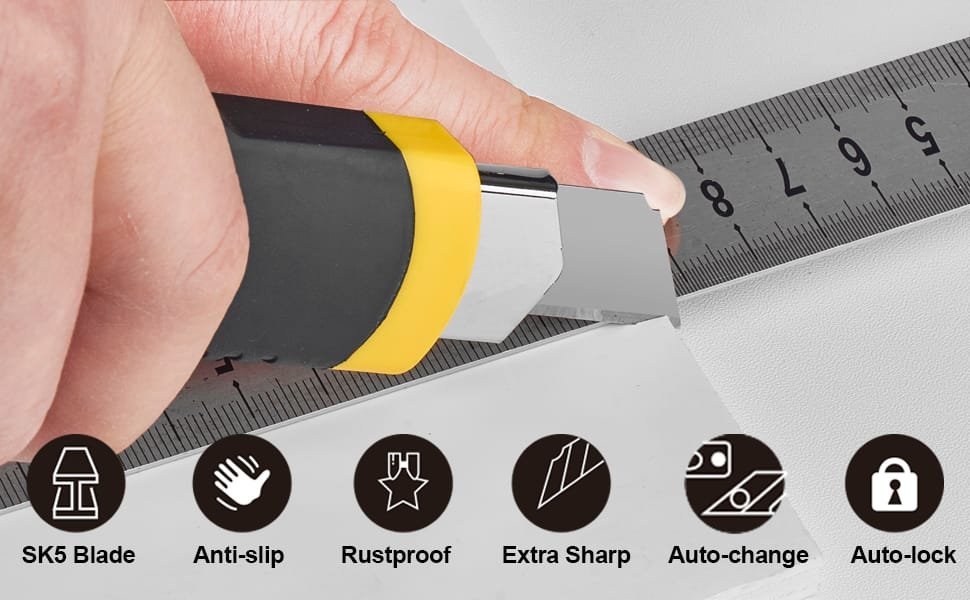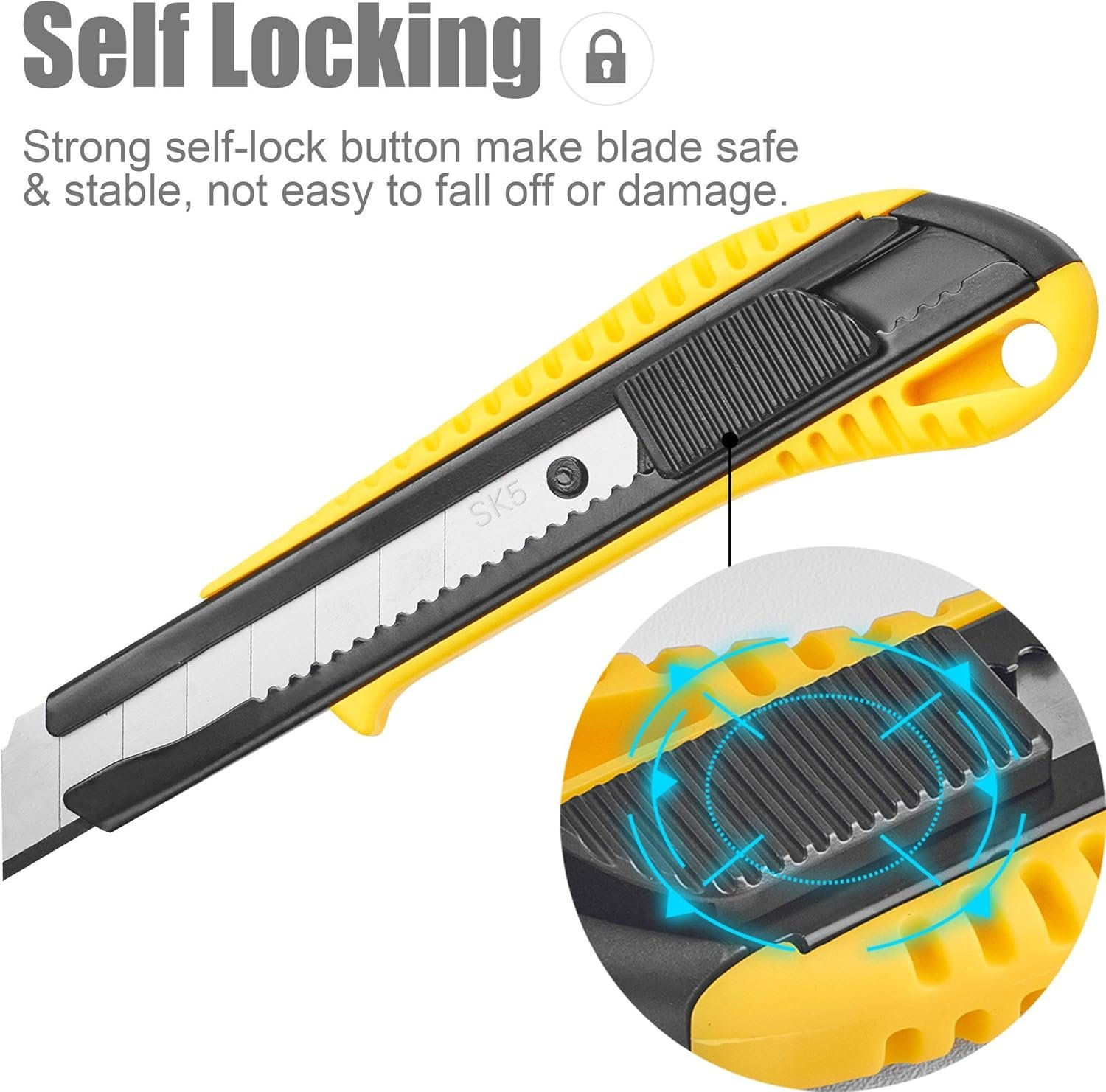In the fast-paced world of industrial and commercial work, the tools we use can significantly impact efficiency, safety, and worker satisfaction. Among these tools, the utility knife stands out as a versatile instrument essential for various tasks. However, not all utility knives are created equal. The rise of ergonomic designs in utility knives has transformed how they are perceived and used in workplaces. This article explores the importance of ergonomic utility knives, particularly focusing on their design features, benefits, and the manufacturing processes involved in creating these essential tools.
Understanding Ergonomics in Utility Knives
What is Ergonomics?
Ergonomics is the science of designing tools and workspaces to fit the user’s needs, thereby enhancing comfort and efficiency while minimizing the risk of injury. In the context of utility knives, ergonomic design focuses on creating handles that reduce strain on the user’s hands and wrists during extended use.
Key Features of Ergonomic Utility Knives
1. Comfortable Grip: Ergonomic utility knives are designed with grips that conform to the natural shape of the hand. This ensures a secure hold, reducing fatigue during prolonged use.
2. Weight Distribution: A well-balanced knife prevents excessive strain on specific muscle groups, allowing for smoother cutting motions.
3. Blade Accessibility: Many ergonomic designs include features that allow users to change blades quickly and safely without additional tools.
4. Safety Mechanisms: Integrated safety features help prevent accidental cuts, making these knives suitable for various environments.

The Role of Nxtools in Utility Knife Manufacturing
Company Overview
Nxtools is a leading industrial and trading company based in Yucheng, Shangqiu—known as the hardware tools capital of China. With a modern manufacturing facility specializing in high-quality hand tools, Nxtools has established itself as a reliable source for ergonomic utility knives among other products.
Manufacturing Process at Nxtools
The production of ergonomic utility knives at Nxtools involves several key steps:
1. Material Selection: High-quality materials are chosen to ensure durability and performance. Stainless steel is often used for blades due to its resistance to corrosion and ability to maintain sharpness over time.
2. Design Development: Engineers work closely with craftsmen to develop designs that meet ergonomic standards. This phase includes prototyping and testing various shapes and materials to find the optimal combination.
3. Precision Manufacturing: Advanced machinery is used to create blades and handles that fit together seamlessly. CNC (Computer Numerical Control) machining allows for high precision in cutting and shaping materials.
4. Quality Control: Each product undergoes rigorous testing to ensure it meets safety and performance standards. This includes checking blade sharpness, handle strength, and overall functionality.
@nx.tools Fully automatic production of Utility knife blade
The Importance of Local Manufacturing
Manufacturing utility knives locally in Yucheng not only supports the local economy but also allows Nxtools to maintain strict quality control over its products. Proximity to suppliers for raw materials reduces lead times and enhances flexibility in production schedules.
Benefits of Using Ergonomic Utility Knives
Increased Productivity
Workers equipped with ergonomic utility knives often experience less fatigue, allowing them to work more efficiently over longer periods. The comfortable grip and reduced strain lead to improved focus on tasks rather than discomfort.
Enhanced Safety
Ergonomic designs often incorporate safety features such as blade guards and retractable blades that minimize the risk of accidental cuts. This is particularly important in environments where workers handle sharp tools frequently.
Reduced Injury Rates
By promoting better hand positioning and reducing repetitive strain injuries (RSIs), ergonomic utility knives contribute to lower injury rates in workplaces. This not only protects workers but also reduces costs associated with workplace injuries.
Improved Job Satisfaction
When employees feel comfortable using their tools, job satisfaction increases significantly. Ergonomic utility knives can lead to a more positive work environment where employees feel valued and taken care of.
Applications of Ergonomic Utility Knives
Ergonomic utility knives are versatile tools used across various industries:
– Construction: For cutting materials like drywall, insulation, and packaging.
– Manufacturing: Used for assembly line tasks involving cardboard boxes and plastic wrap.
– Retail: Essential for unpacking shipments safely and efficiently.
– Crafting: Popular among hobbyists for precision cutting in arts and crafts projects.
– Logistics: Used extensively in warehouses for opening boxes quickly without damaging contents.
Case Study: Ergonomic Utility Knives in Construction
In construction sites where workers often face demanding conditions, ergonomic utility knives have proven invaluable. For instance, a study conducted on a large construction project revealed that teams using ergonomic knives reported a 25% decrease in hand fatigue compared to those using standard models. This led to faster completion times as workers could maintain their pace without frequent breaks due to discomfort.

Comparing Ergonomic Utility Knives with Standard Models
When evaluating different types of utility knives, it’s essential to understand how ergonomic models compare with standard ones:
| Feature | Standard Utility Knife | Ergonomic Utility Knife |
|—————————–|————————|————————-|
| Grip Comfort | Basic plastic grip | Contoured rubber grip |
| Weight Distribution | Front-heavy | Balanced design |
| Safety Features | Minimal | Retractable blade |
| Blade Change Mechanism | Manual | Quick-release mechanism |
| Overall User Fatigue | High | Low |
As seen in this comparison table, ergonomic utility knives offer significant advantages over their standard counterparts.
Maintenance Tips for Ergonomic Utility Knives
To ensure longevity and optimal performance from your ergonomic utility knife, consider these maintenance tips:
1. Regular Cleaning: Clean the blade after each use to prevent residue buildup that can affect cutting performance.
2. Blade Replacement: Replace blades regularly to maintain sharpness; dull blades require more force, increasing the risk of injury.
3. Inspect Safety Features: Regularly check retractable mechanisms or guards to ensure they function correctly.
4. Store Properly: Keep your knife in a designated storage area when not in use to prevent damage or accidents.

Frequently Asked Questions (FAQs)
1. What should I look for when choosing an ergonomic utility knife?
– Look for a comfortable grip, balanced weight distribution, safety features, and easy blade replacement mechanisms.
2. How do ergonomic designs improve safety?
– They reduce fatigue and promote better hand positioning, minimizing the risk of accidents.
3. Can ergonomic utility knives be used by everyone?
– Yes, they are designed to accommodate various hand sizes and strengths.
4. What materials are typically used in ergonomic utility knives?
– High-quality steel for blades and durable plastics or rubber for handles.
5. How does Nxtools ensure quality in its products?
– They utilize advanced manufacturing technologies and rigorous quality control processes throughout production.
6. Are there specific industries that benefit more from using ergonomic utility knives?
– Yes! Industries like construction, manufacturing, retail, logistics, and crafting see significant benefits from using these tools due to their demanding nature.
7. How can I identify a high-quality ergonomic utility knife?
– Look for brands with positive reviews regarding comfort, durability, safety features, and warranty policies.
8. What is the average lifespan of an ergonomic utility knife?
– With proper maintenance, an ergonomic utility knife can last several years; however, regular blade replacements may be necessary depending on usage frequency.
9. Are there different types of blades available for ergonomic utility knives?
– Yes! Blades come in various styles including straight-edge blades, serrated blades, or specialized blades designed for specific tasks like scoring or trimming.
10. Can I use an ergonomic utility knife for heavy-duty tasks?
– Absolutely! Many ergonomic models are designed specifically for heavy-duty applications while providing comfort during extended use.
Conclusion
The evolution of ergonomic utility knives represents a significant advancement in tool design aimed at enhancing worker efficiency and safety. Companies like Nxtools play a crucial role in manufacturing these essential tools, ensuring they meet high standards of quality and functionality. As workplaces continue to prioritize ergonomics, investing in high-quality ergonomic utility knives will undoubtedly lead to better outcomes for both workers and employers alike.
With their proven benefits across various industries—from increased productivity to enhanced safety—ergonomic utility knives are not just tools; they are essential investments into a safer and more efficient workplace environment.

